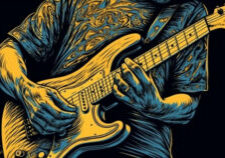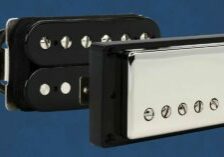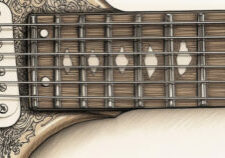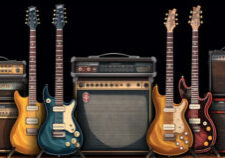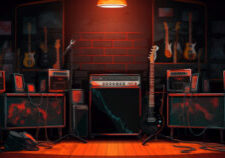This article aims to explore the CAGED system and its practical applications in mastering guitar solos.
The CAGED system serves as a map for understanding the layout of the guitar neck, showcasing the positions of chord shapes and their corresponding notes. Comprised of five basic chord shapes – C, A, G, E, and D – the system allows for easy transposition of chords and scales.
Furthermore, it facilitates the formation of pentatonic scales, enabling improvisation and soloing.
By delving into the intricacies of the CAGED system, guitarists can enhance their understanding of the fretboard and elevate their playing skills.
Understanding the Basics of the CAGED System
The CAGED system provides a framework for understanding the layout of the guitar neck and helps guitarists think of chords as shapes rather than individual notes. It is a system that organizes information about chord shapes and their positions, functioning as a map for guitarists.
The system consists of the basic chord shapes C, A, G, E, and D, which are made up of specific notes. While the focus is on thinking of chords as shapes, it is important for guitarists to also understand the individual notes that make up the chords.
By mapping each chord shape across the fretboard, the CAGED system shows where the shapes can be played and allows for easy visualization of their positions.
Overall, the CAGED system is a valuable tool for guitarists to understand and navigate the guitar neck.
Exploring the Five Basic Chord Shapes
Each of the five basic chord shapes in the CAGED system represents a specific set of notes on the guitar neck.
The C shape, for example, is formed by placing the fingers in the shape of a C chord on the guitar. This chord shape consists of the notes C, E, G, C, and E, played on different strings and frets.
Similarly, the A shape consists of the notes A, C#, E, A, and C#, while the G shape includes the notes G, B, D, G, and B.
The E shape comprises the notes E, G#, B, E, and G#, and the D shape consists of the notes D, F#, A, D, and F#.
Understanding these specific note combinations in each chord shape is crucial when navigating the guitar neck and utilizing the CAGED system effectively.
Transposing Chords and Scales With Ease
Transposing chords and scales with ease is another practical application of the CAGED system. With the CAGED system, guitarists can easily change the key of a chord or scale by simply moving the shape to a different position on the fretboard.
By understanding the relationship between the chord shapes and the corresponding scale shapes, guitarists can quickly transpose their playing without having to learn new fingerings. This allows for greater flexibility and creativity in musical compositions and improvisations.
Additionally, the CAGED system helps guitarists to see patterns and relationships between different chords and scales, making it easier to create interesting chord progressions and musical arrangements.
Mastering the CAGED System for Guitar Solos
A comprehensive exploration of the various applications and techniques of the CAGED system in relation to guitar solos reveals its potential for enhancing improvisation skills and creating dynamic and expressive musical performances.
The CAGED system provides a systematic approach to understanding the layout of the guitar neck and the relationships between chords and scales. By mapping the CAGED chord shapes across the fretboard, guitarists can easily navigate the instrument and locate suitable notes for soloing.
The visual nature of the CAGED system aids in visualizing the positions of chord shapes and scales, enabling guitarists to create interesting and varied solos that showcase their technical abilities and musicality.
Overall, mastering the CAGED system can greatly enhance a guitarist’s improvisational skills and contribute to more expressive and dynamic guitar solos.

